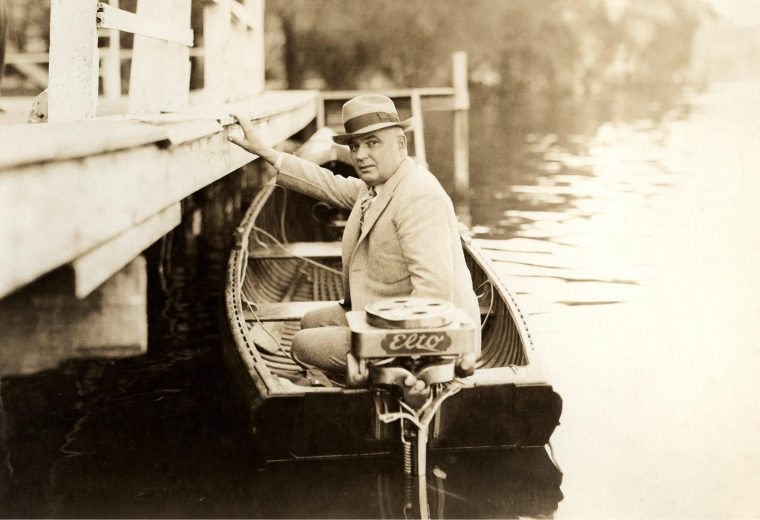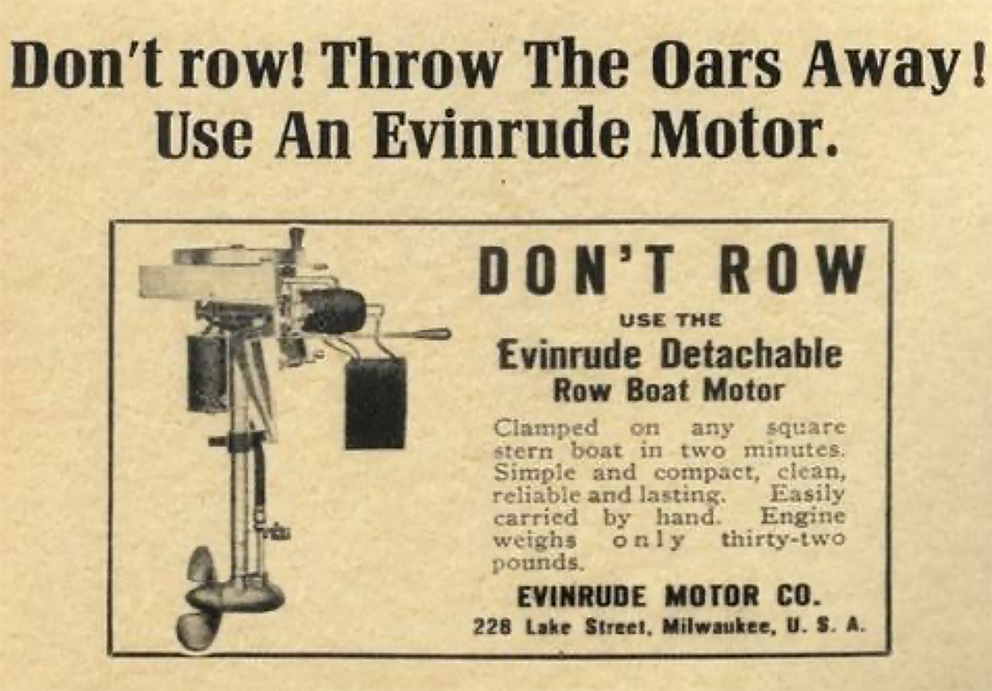Goodbye to an old friend – origins of the outboard engine


The news this week that BRP Inc. has elected to exit the outboard engine business and discontinue building product under its Evinrude nameplate closed the book on a brand that helped drive boating into the modern era.
Ole Evinrude, a Norwegian emigrant to the United States, is widely credited with the invention of the world’s first practical outboard engine in 1907 after a boat trip across a local lake to get ice cream for his fiancée took so long that the ice cream melted by the time he returned. Evinrude realised that a propeller turned by a gasoline engine would move the boat at a much higher speed, leading him to develop a design concept – centred around an engine turning a vertical crankshaft with power directed to the propeller through a set of beveled gears – which is still in worldwide use today.
It took two full years of technical development before Ole Evinrude was able to bring his original single-cylinder, 1.5 horsepower engine to market and establish the Evinrude Motor Company in June, 1909.
The engine was an instant success, but Evinrude was forced to sell the fledgling business shortly afterward in order to care for the fragile health of his former fiancée and now wife, Bess. Undaunted, he formed a second company in 1920 called ELTO – an acronym for Evinrude’s Light Twin Outboard – which also proved successful, selling 1,051engines in the company’s first year of operation and 3,549 engines in its second.

By 1925, ELTO production had surpassed 7,500 units per year. The introduction of the Super ELTO Twin in 1926 – supported by a massive $125,000 advertising campaign – helped ELTO capture even greater market share. In what must have been a moment of intense gratification, Ole Evinrude was able to regain control of the original Evinrude Company when it and a third engine building concern, Lockwood-Ash, merged with ELTO to form Outboard Motor Corporation (OMC) in 1929.
The stock market crash of October 1929 brought sales of all outboards to an abrupt halt as the world plummeted into the Great Depression. Ole Evinrude passed away in June 1934 only months after his wife, leaving the company to their son, Ralph. With the economy now rebounding, Ralph Evinrude soon orchestrated the acquisition of OMC’s key competitor – the Johnson Motor Company – in 1936. On the strength of its large dealer network, the Johnson branding was retained even though the engines were soon mechanically identical to their Evinrude siblings.
By Craig Ritchie
Read more at International Boat Industry News www.ibinews.com

